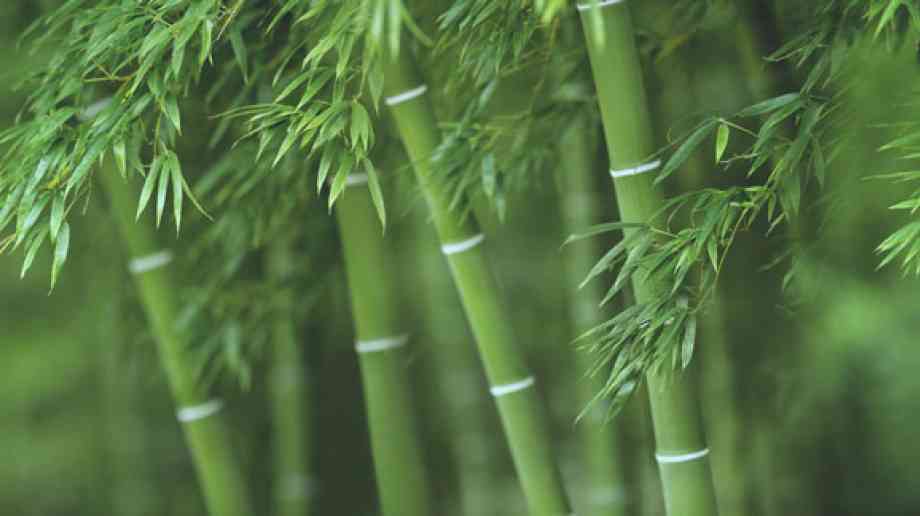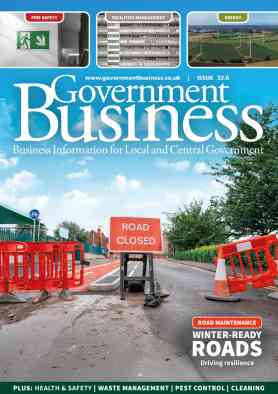
Unearthing hidden threats beyond knotweed
The Property Care Association have a look at some of the invasive species we should be aware of, besides Japanese knotweed.
In the realm of invasive non-native species (INNS), Japanese knotweed undeniably takes centre stage, often referred to as the poster child of invasive plants. However, as attention remains focused on Japanese knotweed, there exists a diverse spectrum of other invasive non-natives that dwell just beyond the spotlight. Despite their comparatively lower recognition, these frequently overlooked plants harbour substantial disruptive potential, waiting to make their mark to our homes and wider environment.
The concerns
Our concerns which surround invasive non-native plants should not solely be around the potential damage they could cause, but actually how easy it is for them to spread and how our own interactions are furthering their propagation.
Invasive non-native plants spread via thousands of wind-driven seeds, or tiny fragments of rhizomes within the soil. These invasive species have the capacity to spread quicker than we can remediate and will capitalise on any mistakes we make in the process of their removal. Early identification aiding to the prevention of spread should be considered the highest priority, but what plants should we be focusing on?
The urban legend of Japanese knotweed
The scientists at CABI produced a report in 2023 that identifies Japanese Knotweed (Reynoutria japonica) as being the most costly non-native invasive plant within the UK economy. A staggering £246.5 million is required each year to subsidise the significant impact caused by a plant which produces no seeds and almost solely relies on human created pathways like fly tipping to spread.
Whilst the importance of managing this plant should not be underestimated, there is a common online narrative perpetuating a public perception that can unfairly impact property sales. Acknowledging that simply leaving Japanese Knotweed to rampantly spread is ill-advised, yet having a significant sum wiped from the value of a property for a plant which has an “alleged” ability to damage buildings seems unfairly disproportionate.
The need to provide balance
In an effort to provide a more nuanced understanding, a comprehensive literature review conducted by Mark Fennell, Max Wade, and Karen Bacon, supported by Royal Institute of Chartered Surveyors (RICS) and the Property Care Association members sought to scrutinise the plant’s structural impact and assess the reliability of the commonly cited “7m rule.”
The Environment Agency (EA) Code of Practice for Japanese knotweed management initially endorsed the “7m rule” stipulating rhizome extension as reaching “7m laterally from a parent plant.” However, a decade later, it became evident that this rule lacked statistical robustness. The study, which challenged previous assumptions found that Japanese knotweed rhizomes rarely extended beyond 4m from above-ground plants. Significantly, the research dispelled the notion that Japanese knotweed causes substantial damage to built structures, even when in close proximity with any observed damage comparable to that caused by trees or woody climbers.
Interestingly, the study highlighted Buddleia (Buddleja davidii) as a potential greater risk, exhibiting a damage score of nearly five times higher than that of Japanese knotweed. This begs the question: should we shift our focus to other, potentially more damaging invaders to our built structures like Buddleia?
Buddleia: seeds of destruction
Buddleia, a revered ornamental plant renowned for its attractiveness to butterflies. It has an astounding capacity and resilience to flourish in soil-depleted environments and in particular for structures constructed with lime mortar. Buddleia’s invasive capabilities become heightened as the plant adeptly takes root even in the minutest crevices. As Buddleia thrives, its roots intricately weave amongst brickwork causing cracks. This in turn raises concerns about potential structural implications such as heightened water penetration, leading to issues like dampness and mould.
Buddleia is commonly observed hanging from buildings, railway arches, or emerging from boundary walls thanks to its wind-driven seed dispersal. Despite its relatively modest economic impact on the UK, amounting to £1.4 million per year, its status as the fourth most costly invasive non-native plant becomes particularly significant when we consider it faces no legal restrictions. Nor are there any restrictions imposed by mortgage lenders highlighting a gap in regulations concerning invasive plants.
While the public’s anxiety surrounding Japanese Knotweed may appear disproportionate, the technical evaluation suggests that Buddleia merits heightened attention within the realm of invasive non-native plants in the built environment.
Rhododendron: an environmental challenge
While Buddleia has been recognised for its impact on built structures, it’s Rhododendron Ponticum that poses a significant threat to our natural environment, particularly in Scotland, where an estimated 50,000 hectares of infested soils are under management. Ranking as the second most expensive invasive non-native plant, it incurs an annual cost of £6.2 million as it steadily encroaches and spreads upon native woodlands.
Beyond its rapid spread, Rhododendron has the capacity to overshadow extensive woodland areas, reducing sunlight availability to ground-level vegetation. Attempting to completely remove or excavate Rhododendron Ponticum does not restore the ground level habitat to its original state where native flowers can bloom and studies in Scotland have revealed that, even after 30 years, native flora failed to make an unaided full return.
Despite being subject to legislation identical to that governing Japanese Knotweed, its availability in garden nurseries nationwide raises concerns about the effectiveness of current regulations. The ease of access of invasive plants only further proliferates their spread once they escape the confines of a garden.
Bamboo: comparable dangers
The accessibility of invasive plants is a notable concern, but few have been placed on a pedestal quite like bamboo. Once celebrated as “the perfect screener” in numerous garden makeover shows during the early 2000s, unfortunately, there is now a recent surge in disputes between neighbours over encroachment issues casting a shadow on this once-beloved species.
Very few plants can rival Japanese Knotweed in terms of its potential to disrupt a homeowner’s amenity enjoyment, yet some varieties of Bamboo have the capabilities to produce a root system which can extend beyond 10m. It is essential to recognise that not all bamboos are invasive and have such capabilities. Applying a metaphorical net across potentially 1,500 different species globally and labelling them all invasive would be detrimental. The immediate focus should be on “invasive bamboos”, and whilst CABI have not highlighted their economic impacts, these varieties are definitely on a watchlist by many invasives species experts.
Notable species include: Golden Bamboo (Phyllostachys aurea); Yellow Grove Bamboo (Phyllostachys aureosulcata); David Bissetti Bamboo (Phyllostachys bissetti); Black Bamboo (Phyllostachys nigra); Arrow Bamboo (Pseudosasa japonica); Umbrella Bamboo (Fargesia Robusta “Pingwu”); and Broad-Leaved Bamboo (Sasa palmata).
These bamboo species are particularly notorious for their capability to expose weaknesses within structures, impact or dislodge hard landscaped features, or lead to amenity value loss within gardens. It’s within this ability to damage structures and disrupt gardens which warrants further research and risk evaluation, preventing another potential “Knotweed narrative” from taking root.
***
The importation of exotic goods and plants is an industry which extends to all corners of the globe. However, it is within this desire to import exotic plants which has resulted in a significant shift within our botanical makeup.
Plant Atlas 2020 has highlighted how the metaphorical scales are beginning to tip. 51 per cent of plants within the UK are now non-native, and 58 per cent of these non-native plants cover an area larger than first recorded in the 1950s. Whilst non-native plants are not always a problem, it’s these select few which become “invasive” that we should be addressing.
Our aim should be to encourage better identification of these invasive plants, which can be gained through free online guides or professional training. This will allow for earlier identification, thus in turn will allow infestations to be halted before they can spread to an almost uncontrollable state.
Most importantly our aim should be to utilise competent, accredited professionals and their knowledge to implement biosecurity measures and reducing the risk of spread. Only then can we begin to break the cycle of spreading invasive non-native plants and reduce the economic impacts they have.


